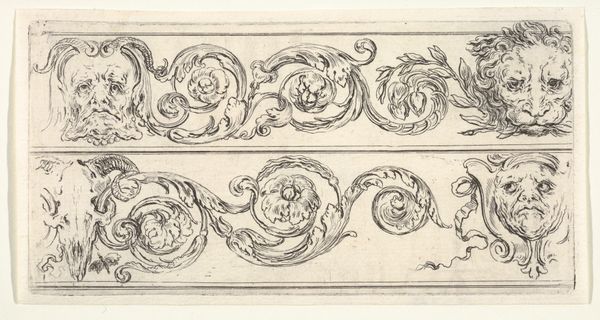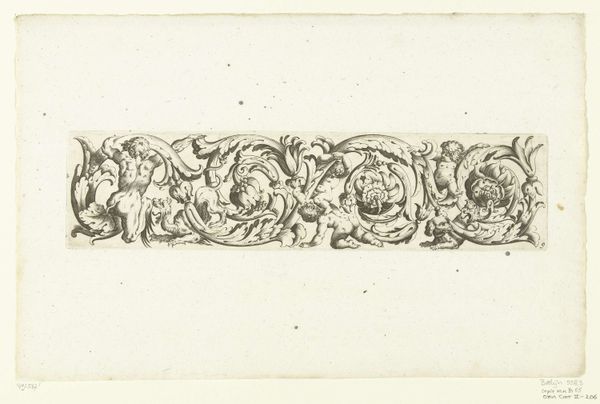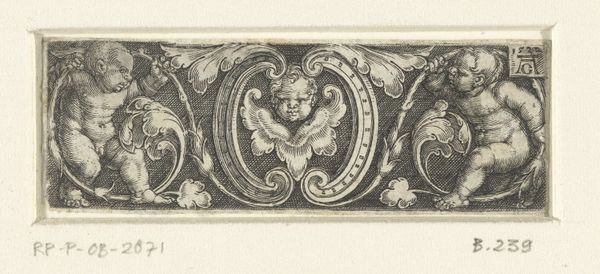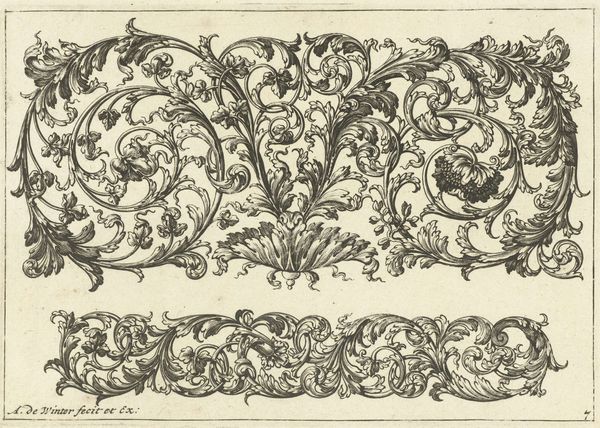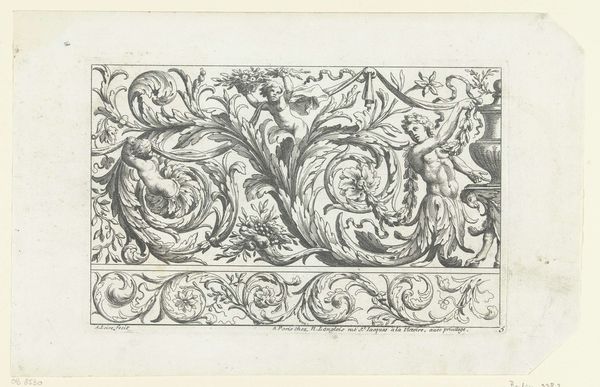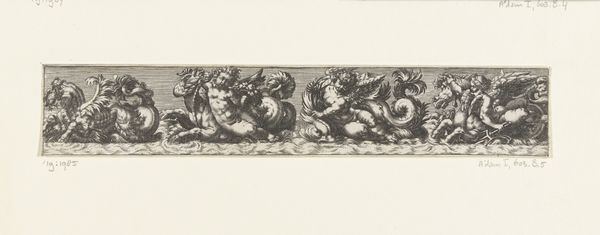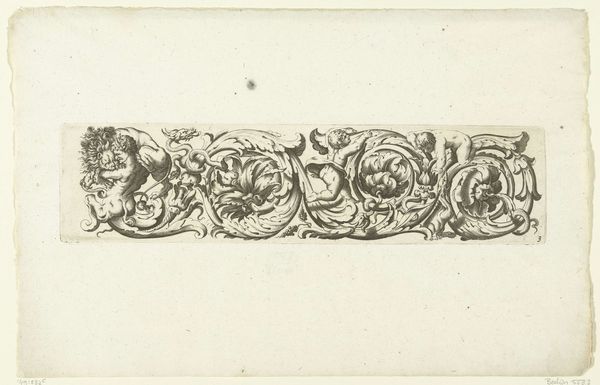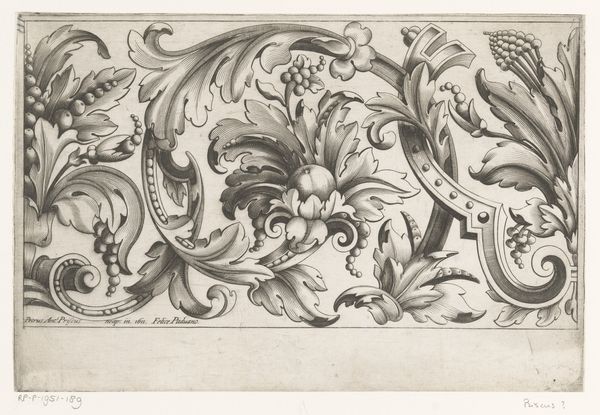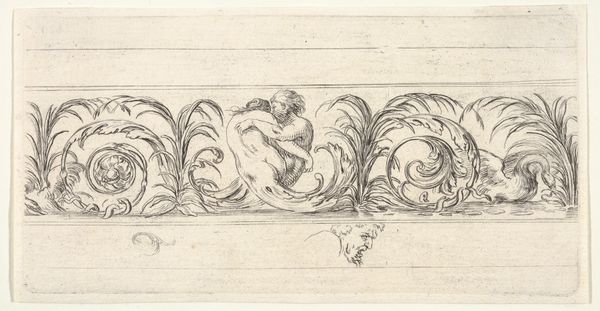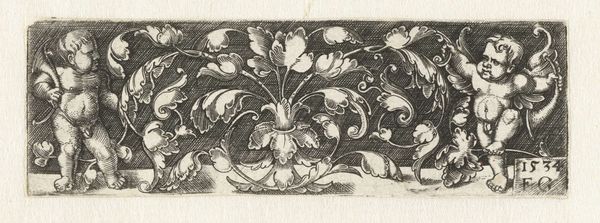
print, engraving
# print
#
11_renaissance
#
geometric
#
line
#
northern-renaissance
#
decorative-art
#
engraving
Dimensions: height 13 mm, width 89 mm
Copyright: Rijks Museum: Open Domain
Jacob Binck created this ornamental frieze with leafy tendrils using etching techniques sometime in the 16th century. Ornament like this was widespread in Northern Europe and was usually integrated into functional objects. The print provides a glimpse into the visual culture of the Renaissance, where classical forms were revived and adapted for contemporary use. This imagery was part of a broader cultural movement, influencing everything from architecture and furniture design to book illustration and metalwork. Germany, where Binck was from, experienced its own unique Reformation which undoubtedly influenced the production of art and its public role. Ornament like this served to enhance the aesthetic appeal of objects, but also signified the patron's status and refinement. Understanding the social and institutional context of this small object involves delving into pattern books, workshop practices, and the dynamics of artistic patronage. By consulting these resources, we can better understand the complex interplay between art, society, and culture in the Renaissance.
Comments
No comments
Be the first to comment and join the conversation on the ultimate creative platform.
